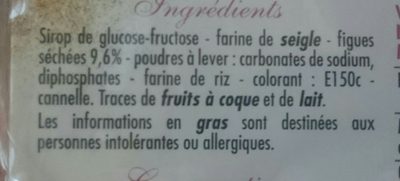Pain d'épices spécial foie gras aux figues séchées - Casino - 150 g
This product page is not complete. You can help to complete it by editing it and adding more data from the photos we have, or by taking more photos using the app for Android or iPhone/iPad. Thank you!
×
Some of the data for this product has been provided directly by the manufacturer casino.
Barcode: 3222476445063 (EAN / EAN-13)
Common name: Pain d'épices aux figues séchées prétranché
Quantity: 150 g
Brands: Casino
Categories: Snacks, Sweet snacks, Biscuits and cakes, Gingerbreads
Stores: Casino
Countries where sold: France
Matching with your preferences
Environment
Carbon footprint
Packaging
Transportation
Other information
Conservation conditions: A conserver à l'abri de la chaleur et de l'humidité .Après ouverture, à conserver de préférence dans une boîte hermétique.
Recycling instructions - To recycle: Plaque carton
Recycling instructions - To discard: Film plastique
Report a problem
Data sources
Product added on by openfoodfacts-contributors
Last edit of product page on by casino-off.
Product page also edited by kiliweb, sebleouf, teolemon, yuka.VzRvNEcvUW51S2NOcHMwaTh3bmIwUDFKKzVTTVYxdnVJc3NVSWc9PQ.









